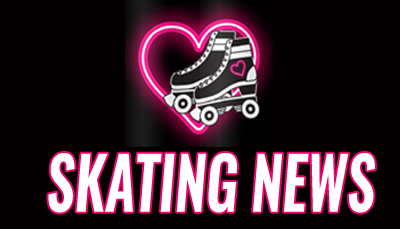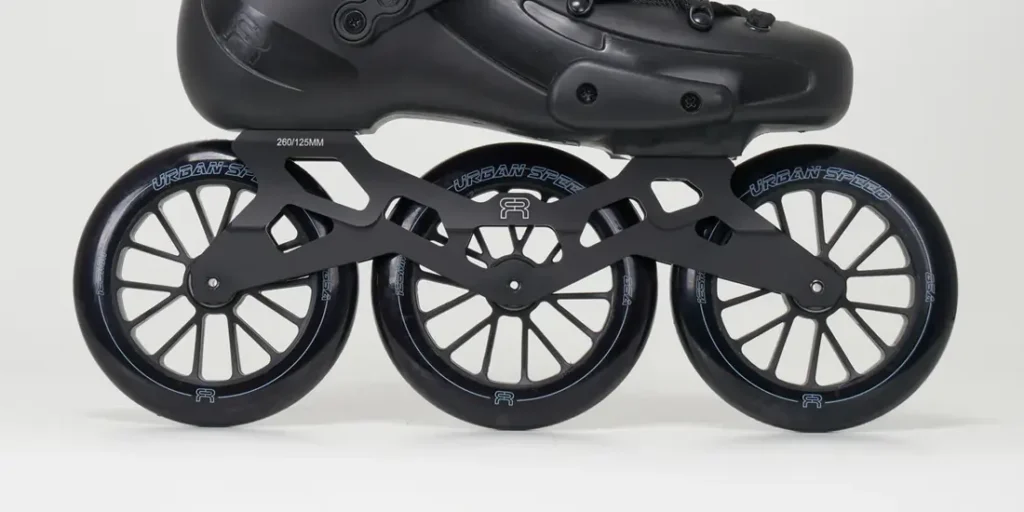I began learning on 80 mm soft boots and recently bought some 90 mm hard boots. While I love the additional efficiency, I noticed the same twists, turns and downhills I could previously navigate with parallel turns almost sent me into bushes on the side of the path! I made it, but not comfortably.
My question is, would you suggest beginners and early intermediates stick to one wheel size until a certain comfort is achieved? Or what tips would you recommend to someone making a jump in wheel size while learning?
Moving from 80mm ➡️ 90mm Wheels: What to Expect & How to Adjust
First off — nice choice 👏. You only jumped from 80s to 90s. Lots of skaters leap straight to 110s and then wonder why everything suddenly feels like skating with canoes strapped to their feet 🚣♂️.
Even a 1cm increase makes a huge difference:
- Frames are longer & higher = more awkward turns and curves.
- Stopping feels harder (and faster wheels mean you really need solid stops).
- Edge control gets trickier, and the glide feels different.
So… yes, bigger wheels are awesome for speed and smoothness, but they demand better technique and revisiting the basics. Here’s how to make that transition feel smooth instead of sketchy.
🔑 Tips for Adjusting to Bigger Wheels
1. Sharpen Your Technique
- Bigger wheels = less forgiveness. If you pronate on inside edges on smaller wheels then your pronation will only get worse on larger wheels.
- Keep your knees bent over your toes (from the side view your knee should cover your toes).
- Keep your weight on the front half of your feet for better control & responsiveness (instead of ‘hanging out’ a bit in the heels).
2. Master the Ready Position
Think of this as your “reset button” position before every move:
- Feet parallel and close together.
- Knees bent over toes.
- Body upright, weight on the front half of your feet.
3. Revisit the Basics
Yep, time to humble yourself and drill again 👇
These simple drills will help you assess where your edge control is on the larger wheels and help you fix any inside edge pronation that has crept in or become exaggerated. They’re also great for strengthening your lower body skate muscles, developing stamina and increased control & balance.
Scissoring
From Ready Position, rolling one skate in front of the other (still in narrow train tracks not tightrope stance), so the front skate is a skate length in front. So the heel of the front skate is close to the toe of the back skate. You can use the Scissor position to begin developing the ability to have more weight on one foot than the other. Start with 60% more weight on the back skate and then build it up gradually to 70% etc. In the future these Scissors will be used to go over rough surfaces, cracks, bumps, kerbs and even land jumps. Both skates on Centre edges in Scissor.
Scooting
Is balancing on one support leg, steering straight ahead on a Centre edge, while producing propulsion with the other skate which is turned out slightly and pushes out to the side. The pushing skate is lifted back in to repeat. Scooting trains edge control on the support skate and builds power for the stride in the pushing leg.
Toe Roll
Is an advanced Scissors stance where you balance on the front skate on a Centre edge while rolling the back skate on just the front (toe) wheel. This is an assisted one-foot glide and you can gradually build up more weight on the front eg from 60% to 70% and higher. If the front skate is not on a Centre edge then balancing in Toe Roll will be difficult. This is far safer than trying to just glide on 1 foot.
Stops (heel brake, ploughs, etc.)
Big wheels amplify sloppy form — nail the simple stuff and everything else improves.
4. Conscious Edge Control 🎯
Edges are harder to control with bigger wheels, so be intentional:
- While scooting, keep your support leg on a center edge (vertical wheels).
- Use your knees to move the edge on purpose, don’t let your skates drift onto an inside or outside edge.
- Level up by practicing this in Toe Roll position (front skate weighted, back skate on toe wheel only, both knees bent). Edge control is much harder in Toe Roll than in Scooting and Scissoring
5. Film Yourself 🎥
Self-check is gold:
- Record from the side.
- Pause and draw a mental line down from your knee cap.
- If your knee doesn’t cover your toe → bend lower.
This gives you instant, accurate feedback on your form.
🚨 Don’t Neglect Your Stops!
With the added speed, stopping gets harder and with less agility on larger wheels, you’ll need to spend some time mastering your stopping methods. Have multiple stopping options (and combos) in your toolkit so you can adapt on the fly. Trust me, this saves you from sketchy situations like downhill panic.
✨ The Big Picture
- Bigger wheels demand a return to the basics.
- Don’t let inside edge pronation sneak in (super common with larger wheels, super hard to fix later).
- Once your fundamentals are locked, you’ll get agility + response back, and then you can truly enjoy the speed & smooth ride 🚀.
Just one last note: larger wheels = smoother roll, faster glide… but slightly less of a workout compared to smaller wheels. So if you’re skating for fitness, keep that in mind and beware of going “too big, too early”.




